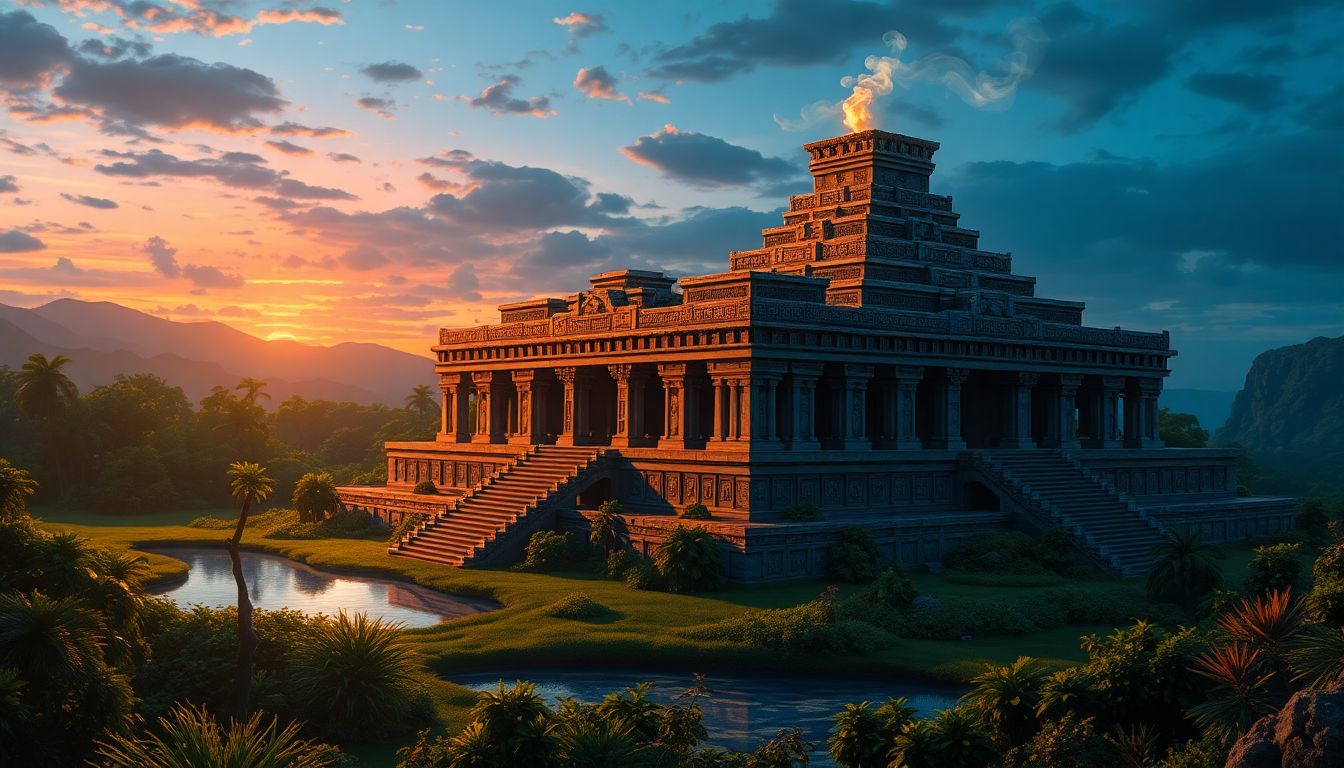
Did the Aztecs Really Try to Achieve Immortality?
The Aztecs held a unique perspective on life and death, believing that death was not the end but a transition to another existence. This worldview shaped their culture and rituals in fascinating ways. The Aztecs, a powerful civilization in central Mexico from the 14th to the 16th centuries, blended rich traditions with a complex understanding of the cosmos. This article explores the multifaceted pursuit of immortality among the Aztecs, considering both literal and symbolic aspects.
The Aztec Understanding of Life and Death
The cyclical nature of time in Aztec cosmology
In Aztec culture, time was viewed as cyclical rather than linear. They believed in recurring ages, or suns, each ending in destruction and rebirth. This concept meant that life and death were interconnected, influencing their rituals and daily practices. They saw death not as something to fear but as a necessary part of existence.
The role of sacrifice in Aztec society
Human sacrifice was integral to maintaining cosmic balance. The Aztecs believed that offering lives to the gods ensured the sun rose every day. Estimates suggest that thousands participated in such rituals annually, reflecting the civilization's commitment to sustaining life and appeasing their deities. This act reinforced their connection to the divine, showcasing their belief in the necessity of sacrifice for both personal and communal survival.
The Afterlife in Aztec Belief
Aztecs envisioned a detailed afterlife, divided into various destinations. Mictlan, the underworld, was where most souls journeyed after death. To reach their final resting place, they had to navigate challenges for four years. Different paths awaited depending on how one lived, emphasizing moral choices during life.
Herbalism and the Pursuit of Longevity
Aztec knowledge of medicinal plants
The Aztecs had extensive knowledge of plants for healing. They used herbal remedies to treat various ailments, believing that nature held the keys to health and longevity. Their practices laid the groundwork for later medical advancements in herbal medicine.
Examples of plants used for healing and potential immortality
Certain plants, like xocolate (cacao) and epazote, were renowned for their health benefits. Cacao, in particular, was associated with energy and vitality, often reserved for the elite. Scholars have noted how these plants contributed to overall wellness, but claims of immortality were more metaphorical than factual.
The limitations of Aztec herbal remedies
Despite their advanced herbal knowledge, true immortality remained elusive. While remedies could enhance health and extend life, they did not stop the inevitable. Acknowledging these limitations showed a realistic approach to their beliefs surrounding life and death.
The Search for Physical Immortality Through Rituals
Ritual practices aimed at extending life
Aztec rituals often aimed at prolonging life or achieving a form of immortality. Specific ceremonies involved offerings to deities, invoking blessings for health and longevity. These rituals served both practical and spiritual purposes in their society.
The role of elite consumption in ritual practices
The elite consumed specific foods and drinks during rituals to connect with the gods. For instance, the consumption of pulque, a fermented beverage, was believed to enhance spiritual experiences and health. These practices underscored the connection between divine favor and physical existence.
Examples of Rituals and their Purpose
Rituals like the Tlacaxipehualiztli, which involved the sacrifice of captured warriors, were believed to grant the victors a special kind of honor and transcendence in the afterlife. Such ceremonies reinforced societal hierarchies while attempting to secure divine favor.
Symbolic Immortality Through Legacy and Remembrance
The importance of lineage and ancestry
Aztecs placed a heavy emphasis on ancestors and lineage. Family ties were crucial in maintaining one’s legacy, allowing individuals to achieve symbolic immortality through the continued existence of their descendants. They believed their names and stories would live on through generations.
The role of art and architecture in preserving memory
Aztec art and architecture served as lasting testaments to their culture. Monumental structures, like the Templo Mayor, honored their gods while ensuring the memory of rulers and significant events endured. Intricate carvings and murals depicted stories that conveyed their beliefs and history.
Preserving Legacy Through Deeds
The Aztecs strived for immortality not just through birth but through their impactful deeds. Warriors sought honor in battle, while scholars and builders aimed to create lasting works that told their stories. This pursuit of legacy shaped their identity and traditions.
The Ruler's Pursuit of Immortality
Rituals specific to the Aztec Emperors
Emperors engaged in unique rituals aimed at extending their rule and influence. They believed that performing sacred rites could link them to the divine, granting them a divine right to rule. This connection offered a form of political and spiritual immortality.
The symbolic representation of power and divinity
Aztec rulers projected their power through symbols, like elaborate headdresses and ceremonial attire. These images associated them with the gods, reinforcing their divine connection and the idea of eternal rule. The rulers aimed to create a legacy that would endure long after their physical presence diminished.
Examples of Rulers and Their Attempts at Immortality
Emperor Moctezuma II famously sought connection with the gods through rituals and offerings. His reign is marked by grand ceremonies that showcased his power and divine favor, aiming to ensure a lasting legacy even beyond his rule.
Conclusion
The Aztec pursuit of immortality presents a rich tapestry of beliefs intertwining life, death, and legacy. Through their rituals, understanding of nature, and commitment to remembrance, they sought ways to achieve a form of immortality—even if it was symbolic rather than literal. The Aztec worldview reflects deep philosophical beliefs that continue to resonate today. Humanity's quest for understanding and meaning in the face of mortality remains a vital part of our existence.